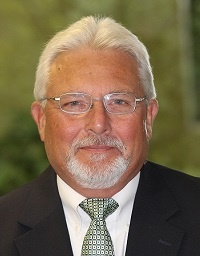Spotlight on Minnesota's 2015 Interoperable Electronic Health Record Mandate
By Craig Veach, Sales Executive, AmkaiSolutions

The adoption and effective use of electronic health information systems can play a significant role in transforming the health care system and in supporting healthier communities. New tools are bringing the power of information systems to the practice of health care and public health, improving both quality and safety.
Several statutory changes and mandates were enacted in the 2007 and 2008 Minnesota legislative sessions including a mandate that all hospitals and health care providers have an interoperable electronic health record (EHR) system by 2015. See the 2015 Interoperable Electronic Health Record Mandate (Minnesota Statute 62J.495 HEALTH INFORMATION TECHNOLOGY AND INFRASTRUCTURE)."
The two paragraphs above appear on the Minnesota Health website, defining what is needed to continue to provide medical care in the state. The mandate of an interoperable electronic health record (EHR) or electronic medical record (EMR), applies to ambulatory surgery centers as well as to inpatient hospitals and physicians. But while hospitals and physicians have had multiple years to complete the process, Minnesota ambulatory surgery centers have just a little more than a year to achieve the final step of interoperability. Ambulatory surgery centers which have not already started the implementation process may find themselves facing a deadline: implementing an EMR at the same time they are going live with ICD-10s. And while it is true that ambulatory surgery centers are much more efficient and nimble than inpatient hospitals, some hospitals are taking years to reach the inoperability level that Minnesota ambulatory facilities have to achieve in just a little over a year!
I thought this article would be of interest to you, and it would be worth your time to check in with your state to see if it is planning a mandate similar to Minnesota. There is growing pressure to provide the enhanced care and data that can only be achieved with an EMR, and we should not be surprised to see other states preparing similar requirements. In fact, just a few months ago, the Ambulatory Surgery Center Association submitted a letter to the National Coordinator for Health Information Technology on the importance of developing an EMR standard for ambulatory surgery centers similar to the Meaningful Use guidelines used by inpatient and ambulatory delivery units.
The federal and state governments are going to demand data in a format similar to Meaningful Use interoperability. That information can only be provided efficiently and effectively by an EMR. Minnesota is just the first to move in that direction.
It is therefore imperative that you begin planning now, as those facilities using a scanning solution or a "forms under glass" pseudo EMR will ultimately have to replace those systems and implement an EMR that meets Meaningful Use regulations. If you would like to get know more about Meaningful Use, or the steps to implement an EMR, please contact me directly at craig.veach@amkai.com and I will gladly send you white papers on these subjects.


























